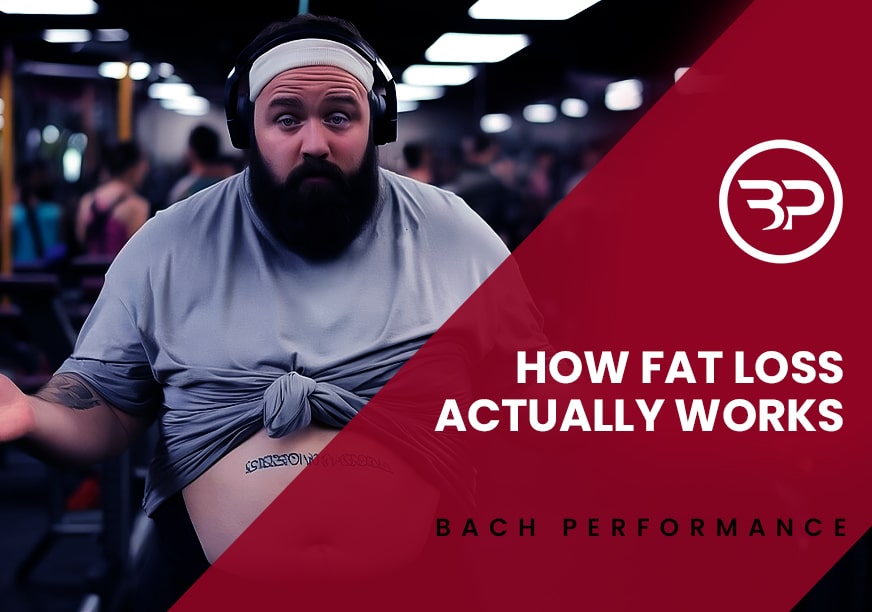Daily Undulating Periodization (DUP): How to Build Muscle Fast
August 24, 2020
Daily undulating periodization, also known as DUP is one of the most effective strength-training strategies to help you build strength and muscle.
What is Daily Undulating Periodization (DUP)
DUP, or daily undulating periodization, is the systematic variation of training volume and intensity into shorter periods of time (1, 2). This method of periodization is non-linear, which is in contrast with the traditional linear periodization (LP) model.
Daily Undulating Periodization (DUP) Vs. Linear Periodization (LP)
The traditional LP model focuses on the variation of training volume and intensity throughout the year, which is facilitated by a systematic decrease of volume and increase of intensity to allow a peak performance at a planned time (1).
In other words, you train for a specific block of time with one goal that builds up to the next training block. This could be a muscle building phase followed by a pure strength phase and finished with a power phase for competition.
Conversely, if your goal is to look better naked, you may do a strength phase, followed by a muscle-building phase, and finished with an aggressive fat loss cut. Daily undulating periodization can be designed to accomplish any goal. [And if you want to build muscle specifically, head here].
Why Daily Undulating Periodization is Better Than Linear Periodization
What’s so great about it when compared to a more traditional method of periodization?
DUP allows you to focus on four elements:
1) Establishing a more efficient recovery pattern (i.e. stress to recovery ratio)
2) Adding more volume per week (added volume = hypertrophy)
3) Increasing training frequency = increasing skill acquisition/adaptation of neural movement patterns
4) Eliminate motivation zapping plateaus.
First, DUP allows for a more efficient recovery pattern, while still allowing you to maintain the adequate intensity and volume needed to increase strength and stimulate/maintain hypertrophic development (3). During a traditional LP training block, the intensity steadily increases while the volume steadily decreases.
This results in cumulative fatigue and staleness. In addition, you run the risk of losing a portion of the muscle mass gained during the higher volume blocks (3).
Second, the DUP method improves recovery while simultaneously allowing you to add total volume per week. This is critical since total volume (i.e. mechanical overload) is directly related to stimulating the necessary cellular signaling for the development of muscular hypertrophy.
Third, DUP allows for an increased training frequency through the alternation of stimulus during a shorter period of time. As a result, you create a greater neuromuscular adaptation compared to the linear model (1, 2, 3).
Increased training frequency is a powerful tool for increasing overall training volume while also allowing you to do shorter, more time-sensitive workouts.
Eric’s Note: In essence, you train heavy during one workout, like a heavy deadlifting session. Then vary the rep range and intensity the following week.
The next workout can be more extensive, with higher volume and less neurological demand.
Essentially, you could do 5×5 deadflits on Monday. Then perform deadlifts (or another variation) for 3×8-10 reps on Wednesday.
This can be applied on a bigger scale to one or two-week microcycles of training.
Charles Poliquin’s Weekly Daily Undulating Periodization (DUP)
The late Charles Poliquin (1988) originally proposed the systematic alternation of volume/intensity in shorter periods of time in 1988 (3).
Poliquin (1988) theorized that strength-training programs lose their efficiency after two weeks, as he supported two-week cycles of a training block while alternating between volume and strength blocks (3).
Furthermore, Poliquin pointed out that alternating volume/strength block eliminates the physiological and psychological causes of progress stagnation caused by an overemphasized specialization on volume or intensity (3).
Imagine using a squat or bench press with the progression in the infographic below.
As you see, Poliquin’s model allows for a new stimulus every two weeks and provides you with the required intensity needed for strength gains, while facilitating the necessary mechanical overload required for muscular hypertrophy. As a bonus, we’ve found these changes make keep training novel and fun without completely changing a program.
Mirandas Daily Undulating Periodization Template
Miranda et al (2011) compared LP versus DUP in a model that was adopted by Rhea et al (2002), as daily undulating periodization, or what we refer to as DUP (1, 2). Miranda and his colleagues found that DUP elicited similar improvements in maximum strength when compared to LP (1).
However, since the DUP treatment group had a significantly higher baseline 1RM it can be suggested that the DUP treatment group did elicit a greater change in maximum strength, by noting the magnitude of change (i.e. effect size) (1).
In other words, Miranda et al suggested a DUP model with varying volume and intensity is better at getting you jacked than basic linear periodization.
| Day 1 | Day 2 | Day 3 |
| 3 X 8-10RM | 3 X 6-8RM | 3 X 4-6RM |
Miranda’s treatment model portrays the alternation of volume and intensity throughout each specific week, which allows for adequate recovery as well as a new stimulus each training day. Rhea et al (2002) pointed out that the superior strength gains seen with DUP could be attributed to a multitude of mechanisms including muscle fiber transformation, bioenergetic adaptations, and neuromuscular alterations (2).
 Okay, Enough with Daily Undulating Periodization (DUP) research. How will this help you look better naked?
Okay, Enough with Daily Undulating Periodization (DUP) research. How will this help you look better naked?
DUP is be prescribed many different ways and varies according to the individual, purpose of training, and period of a lifting cycle (i.e. off-season, in-season, etc.).
That means whether you’re looking to get explosive athleticism, strength, or get jacked DUP is adaptable to your goals. However, a four-week DUP program with a 2:2:1 weekly ratio of hypertrophy, strength, and power training would look like this:
Week 1
| Day | 1 | 2 | 3 | 4 | 5 |
| Reps | 10-12 | 6-8 | 3-5 | 10-12 | 6-8 |
| Sets | 4 | 4 | 6 | 4 | 4 |
| Intensity | 65-70% | 70-75% | 55-60% | 65-70% | 70-75% |
| Volume | 40-48 | 24-32 | 18-30 | 40-48 | 24-32 |
Week 2
| Day | 1 | 2 | 3 | 4 | 5 |
| Reps | 8-10 | 4-6 | 2-4 | 4-6 | 8-10 |
| Sets | 4 | 5 | 6 | 5 | 4 |
| Intensity | 70-75% | 82-88% | 58-63% | 82-88% | 70-75% |
| Volume | 32-40 | 20-30 | 12-24 | 20-30 | 32-40 |
Week 3
| Day | 1 | 2 | 3 | 4 | 5 |
| Reps | 6-8 | 2-4 | 2-4 | 6-8 | 2-4 |
| Sets | 3 | 4 | 5 | 3 | 4 |
| Intensity | 75-80% | 88-92% | 60-63% | 75-80% | 88-92% |
| Volume | 18-24 | 8-16 | 10-20 | 18-24 | 8-16 |
Week 4
| Day | 1 | 2 | 3 | 4 | 5 |
| Reps | 10-12 | 6-8 | 3-5 | 10-12 | 6-8 |
| Sets | 4 | 5 | 6 | 4 | 5 |
| Intensity | 68-73% | 73-78% | 55-60% | 68-73% | 73-78% |
| Volume | 40-48 | 30-40 | 12-24 | 40-48 | 30-40 |
In this four-week sample program, the training days would be split as follows:
Day 1: Upper Body/Hypertrophy
Day 2: Lower Body/Strength
Day 3: Full Body/Power (pause sets w/focus on slow eccentric control and explosive concentric movement)
Day 4: Upper Body/Strength
Day 5: Lower Body/Hypertrophy
When programming a training schedule using the DUP method, it’s imperative to remember that DUP is programmed based on each individual goal. Training must be specific to your goals—a one size fits all approach is a first-class ticket to mediocrity, not excellence. Although DUP looks complicated, the basics are still best. Pick compound exercises you know well and hammer home strength and performance.
| Upper | Bench Press | Push Press* |
| Lower | Back Squat | Deadlift |
* The weight is based on an estimated 1RM from a 5RM test
As you can see, the exercise selection is basic and focused on push, press, pull, and squat. Include accessory movements after the main exercises to balance training between anterior/posterior sides of the body and prevent injury.
Wrapping Up Daily Undulating Periodization
When your training hits a plateau you must make a change.
Your periodization model is a good place to start.
Adapt daily undulating periodization to your training for improved recovery, greater training volume, and increased training frequency for massive gains in strength and muscle mass. Keep your exercises simple and train with purpose; you’ll be blasting through your plateau and setting PR’s in no time.
But, That’s Not All
Looking to Implement the DUP method into your training to build bone-crushing strength and look great naked without living in the gym?

We have the perfect resource for you.
The Chiseled Muscle Cheatsheet is a No B.S. approach to helping you build a lean, muscular physique.
Whether you’re an average dude just trying to look better naked or looking at add strength and explosive power, we’ll help you optimize your training without spending every waking minute in the gym.
About the Author:
Marc Lewis M.S.(c), CSCS, ACSM-CPT is the Director of Sports Performance at Winston Salem Personal Training in Winston Salem, NC, as well as a graduate assistant at the University of South Carolina in the Department of Exercise Science.
References
- Miranda F, Simao R, Rhea M, Bunker D, Prestes J, Diego Leite R, Miranda H, De Salles F & Novaes J. Effects of linear versus daily undulatory periodized resistance training on maximal and submaximal strength gains. Journal of Strength and Conditioning Research. 25(7). 2011.
- Rhea M, Ball S, Phillips W & Burkett L. A comparison of linear versus daily undulating periodized programs with equated volume and intensity for strength. Journal of Strength and Conditioning Research. 16(2). 2002.
- Poliquin C. Five steps to increasing the effectiveness of your strength training program. National Strength and Conditioning Association. 10(3). 1988.









[…] 2. Why DUP is Better Than Linear Periodization (Marc Lewis) […]
[…] Why DUP is Better Than Linear Periodization – Guest Post by: Marc Lewis M.S.(c), CSCS, ACSM-CPT […]
[…] training should be utilized as a supplement in a specific microcycle of a periodized program (check out a comparison of two types of periodization theories here). Rest-pause training is high intensity training and should be programmed accordingly. Therefore, […]
[…] training should be utilized as a supplement in a specific microcycle of a periodized program (check out a comparison of two types of periodization theories here). Rest-pause training is high intensity training and should be programmed accordingly. Therefore, […]
[…] Daily Undulating periodisation vs. Linear periodisation […]
[…] training should be utilized as a supplement in a specific microcycle of a periodized program (check out a comparison of two types of periodization theories here). Rest-pause training is high intensity training and should be programmed accordingly. Therefore, […]
[…] Marc Lewis’ examples […]
At the 4 week 2:2:1 DUP program there is a mistake at week4/day3.
This is great information , thank you
However, I do have a question . It seems that this program is focused on male athletes. I’m female and train for building muscle and strength. What would you suggest for a female aspiring to compete for figure?
[…] training should be utilized as a supplement in a specific microcycle of a periodized program (check out a comparison of two types of periodization theories here). Rest-pause training is high intensity training and should be programmed accordingly. Therefore, […]